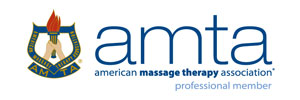What is Structural Integration (Rolfing)?
If you can imagine how it feels to have a fluid, light, balanced body, free of pain, stiffness and chronic stress, at ease with itself and the earth’s gravitational field, then you will understand the goals of Structural Integration. Emmett Hutchins
As with most geniuses, Dr. Ida P. Rolf created Rolfing out of her desire to help others. She saw family and friends who suffered greatly from muscular/skeletal problems and wanted to find a solution that got to the core of the problem. She sought a permanent fix to the pain not a temporary solution.
Ida Rolf was the perfect candidate for this task as she had a background in the biochemistry of connective tissue and ever created her PhD. thesis on this subject. With experience in yoga and osteopathic soft tissue work, she spent many years refining Structural Integration (aka Rolfing).
Dr. Rolf stated, “The focus of Rolfing is to restore order and symmetry to the physical structure that was originally our birth right, but lost.” Remember the freedom you felt as a child? Your movement was unrestricted and you felt like your body could do anything. Rolfing helps return you to that youthful state of being and movement.
Throughout our lives we come under various stresses. Most of us have experienced one or more of these assaults on our body:
- Repetitive use and stress from work (e.g. bending over a computer, assembly line work, sitting etc, all day long).
- Postural patterns created in youth that were designed to protect us from real or imagined threats.
- Injuries (like fractures, sprains, whiplash) and how the body adapts
- Surgical invasions and scaring and the adaptive pattern the body creates to compensate.
- Chronic back and neck pain.
- Headaches and migraines.
- Physical, mental and stress.
These stresses are actually assaults on the body. The body adapts by tensing itself to form protective layers by tightening the connective tissue known as fascia. Fascia separates one muscle from the next and also attaches to our bones. You can think of fascia as an organic fabric that gives the body much of its shape and support. Although fascial sheets are separate and distinct by muscles and muscle groups, they are also interconnected throughout the body. This is why you can manipulate the fascia in the foot and affect the muscles of the chest. Fascia is the same white “marbleized” substance that you will find in raw meat.
When the fascia begins to protect the body, it may shorten, twist and become less pliable. This in turn shortens, twists and compresses the body, pulling it out of alignment. Flexibility is reduced, movement becomes restricted and bodily systems including organ function is impaired.
In a Rolfing (Structural Integration) session, diagnosis of where these “assaults” are is paramount. It separates a good Rolfer from a great Rolfer. Once the restrictions are noted, the practitioner applies hands-on pressure to get the fascia to lengthen and untwist. The body is then reassessed and more corrections are applied, if necessary, until the body unwinds itself.
This process balances the body’s “core.” This is why it is called Structural Integration. The body’s core structures/framework, the muscles and bones of the body, are reintegrated into integrity and restored to their original design. Pain is often completely eliminated or always greatly reduced. A UCLA study of people who have completed the 10-step Structural Integration process found that they expend less energy as they move. This frees up the body to have more energy for the fun things in live.





